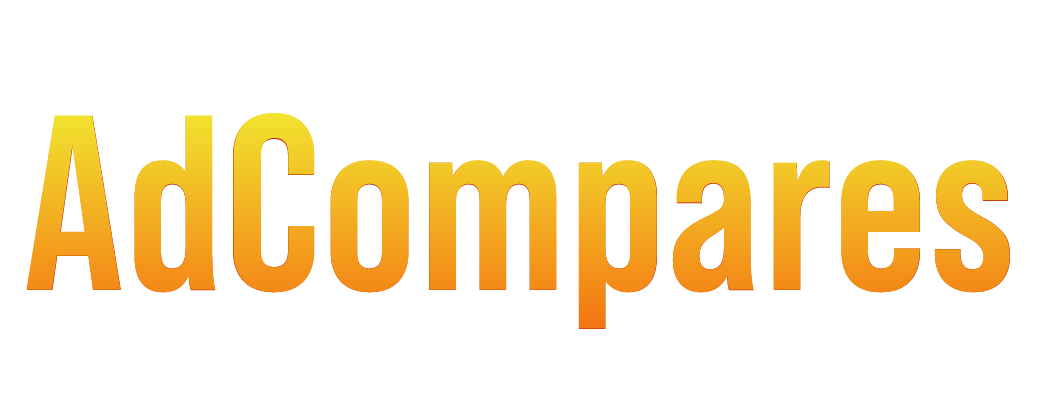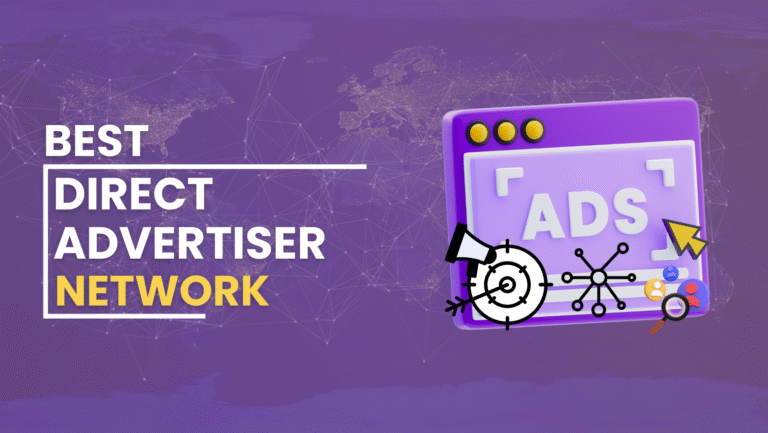In 2026, the Best Direct Advertiser Networksin the digital marketing world are more competitive than ever, and the right ad network is your secret weapon to stand out. Direct advertisers face a landscape overflowing with options, but success depends on selecting partners that offer targeted reach, innovative tools, and seamless management. The top ad networks do more than connect you to audiences; they fuel measurable growth and adaptability in an industry that never stands still. This guide reveals the leading ad networks for direct advertisers in 2026, highlighting their features, traffic sources, and ad formats to help you choose the best platform for your goals.
What Are Ad Networks?
Ad networks are technology platforms that act as intermediaries. They connect advertisers who want to buy ad space with publishers who want to sell it. An ad network aggregates ad supply from publishers. It then matches this supply with advertiser demand. This process enables advertisers to launch campaigns across many websites without contacting each publisher individually. Direct advertisers benefit from this streamlined access to diverse traffic sources.
Direct advertisers rely on advanced tools and capabilities to maximize campaign performance, improve transparency, and ensure a strong return on investment. By leveraging modern advertising technologies, brands can target the right audience, track results in real time, and protect their budgets from fraudulent activity. These features make direct advertising a powerful solution for businesses looking to optimize their marketing efforts.
Key Features
- Advanced Ad Targeting Options – Reach specific audience segments using geotargeting, device targeting, operating system filters, and behavioral or interest-based targeting to improve conversion potential.
- Diverse Ad Formats – Utilize push notifications, pop-unders, native ads, banners in various sizes, and video ads to engage users across multiple channels.
- Real-Time Reporting and Analytics – Monitor KPIs like CTR, conversion rates, and CPA instantly, compare performance across segments, and generate custom reports for insights.
- Fraud Detection Systems – Identify fake impressions and clicks, block non-human activity automatically, and protect ad spend to maintain campaign integrity.
- Customizable Campaign Settings – Adjust bid strategies, scheduling, and frequency caps to optimize performance according to business goals.
- Audience Segmentation – Group users by demographics, behavior, or past interactions to deliver more relevant ads and increase engagement.
- Integration with Third-Party Tools – Seamlessly connect with analytics, CRM, or affiliate marketing platforms to streamline campaign management and reporting.
Best Direct Advertiser Networks in 2026
The advertising landscape is dynamic, with networks constantly evolving. The following ad networks are prominent choices for direct advertisers in 2026, based on their features and performance.
- PropellerAds
- Adsterra
- MGID
- RichAds
- MyBid
- ExoClick
- Evadav
- TrafficStars
- Clickadu
- HilltopAds
1.PropellerAds
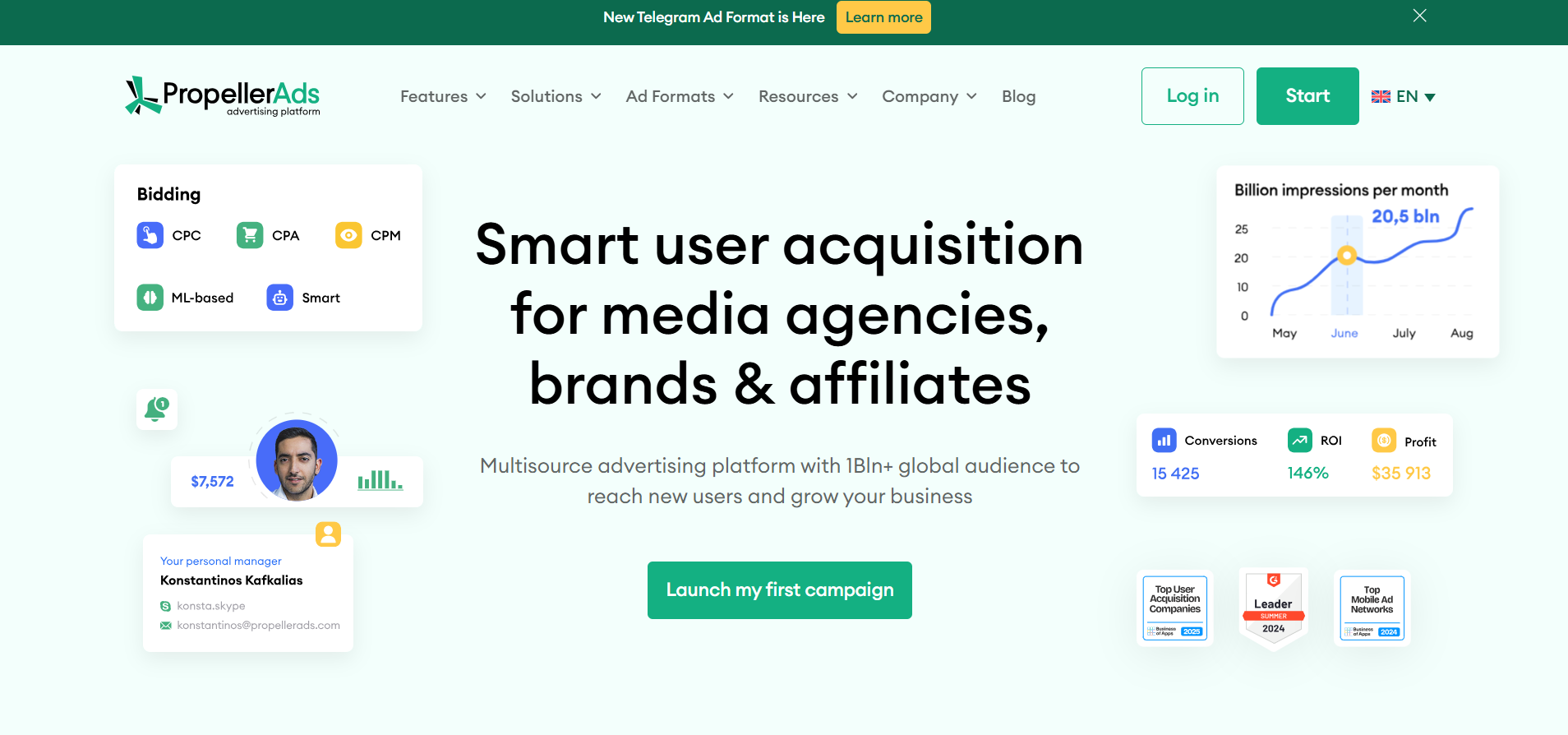
PropellerAdsstands out as one of the world’s largest ad networks, recognized for its massive scale, user-friendly interface, and innovative ad formats. The platform is designed for both newcomers and expert advertisers, serving over 12 billion ad impressions each day. Its easy onboarding process, diverse monetization methods, and robust support make it a premier choice for campaigns of all sizes.
Key Features of PropellerAds
- Ad Formats: PropellerAds offers Push Notifications, On-Click Ads (Pop-unders), In-Page Push, Interstitials, and Vignette Banners. This variety allows for creative campaign strategies.
- Targeting Options: Advertisers can use extensive targeting, including user activity, GEO, device, OS, browser, and connection type. The network also has demographic and interest targeting.
- Optimization Tools: The platform includes CPA Goal 2.0, an auto-optimization algorithm. It adjusts campaigns to meet the advertiser’s target cost per acquisition. Smart Rotator technology tests various ad creatives to identify the most effective performers.
- Traffic Sources: The network has a global reach, with traffic from a wide range of publisher websites across multiple verticals.
Pros
- High Global Reach: Access to billions of daily impressions across multiple geographies and devices.
- Diverse Ad Formats: Offers On-Click, Push, Interstitial, and Popunder ads suitable for various campaign goals.
- Smart Optimization: Automatic traffic segmentation and AI-based optimization improve ROI with less manual work.
- Easy to Start: Simple setup and a low minimum deposit make it ideal for beginners and smaller advertisers.
- Real-Time Analytics: Comprehensive reporting tools allow for quick performance tracking and campaign adjustments.
Cons
- Variable Traffic Quality: Some sources may produce low engagement or high bounce rates if not properly filtered.
- Limited Manual Targeting: Advanced manual targeting options are somewhat restricted compared to premium networks.
- Competition for Premium Traffic: High-performing placements can be competitive and costly.
- Strict Ad Approval Process: Certain niches or creatives may face frequent rejections or delays in approval.
- Customer Support Delays: Response times for support can vary during peak advertising periods.
Adsterra
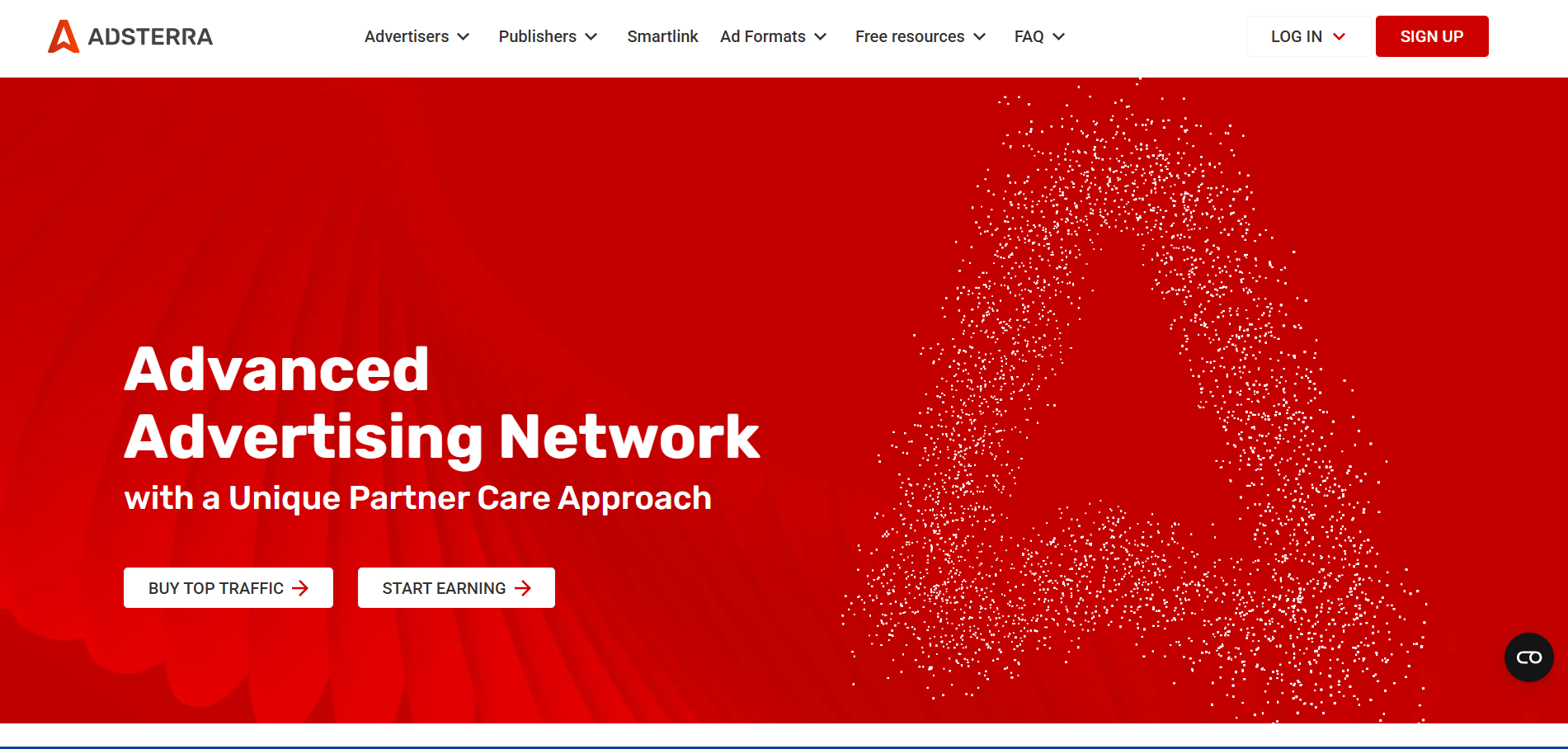
Adsterra is celebrated for its commitment to both high-traffic quality and personalized advertiser support. Trusted by over 21,000 direct publishers globally, its partner-care ethos, multilayer fraud protection, and extensive targeting controls make it a popular platform among those seeking results-driven campaigns and top-notch security.
Key Features of Adsterra
- Ad Formats: Adsterra provides Pop-unders, Social Bar (In-Page Push), Banners, Native Ads, and Video (VAST). The Social Bar is a unique format that drives high engagement.
- Targeting Options: The platform offers standard targeting options like GEO, device, and OS. It also allows for carrier targeting, language targeting, and IP targeting. Advanced options include browser version and keyword targeting for pop-unders.
- Security: Adsterra uses an in-house fraud detection system combined with third-party solutions. This multi-layered approach ensures high traffic quality and protects advertisers from fraudulent activities.
- Payment Models: The network supports various payment models, including CPM, CPC, CPA, CPL, and CPI. This flexibility allows advertisers to choose the model that best aligns with their campaign goals.
Pros
- High-Quality Global Traffic: Delivers targeted impressions from reliable publishers worldwide.
- Innovative Ad Formats: The Social Bar format stands out for its visual appeal and strong CTR performance.
- Flexible Payment Models: Supports CPM, CPA, CPL, and CPI, giving advertisers control over cost structures.
- 24/7 Multi-Language Support: Responsive assistance in multiple languages enhances user experience.
- Low Entry Threshold: A $100 minimum deposit makes it accessible to new and small-scale advertisers.
Cons
- Variable Conversion Rates: Some verticals may see inconsistent results depending on geo and ad format.
- Traffic Filtering Needed: Without proper optimization, low-quality or bot traffic can occasionally appear.
- Limited Native Ad Options: Compared to other networks, native ad coverage is relatively small.
- Competition in Popular Niches: High-demand categories (like finance or dating) can drive up costs.
- Dashboard Learning Curve: The reporting interface can feel complex for first-time users.
MGID
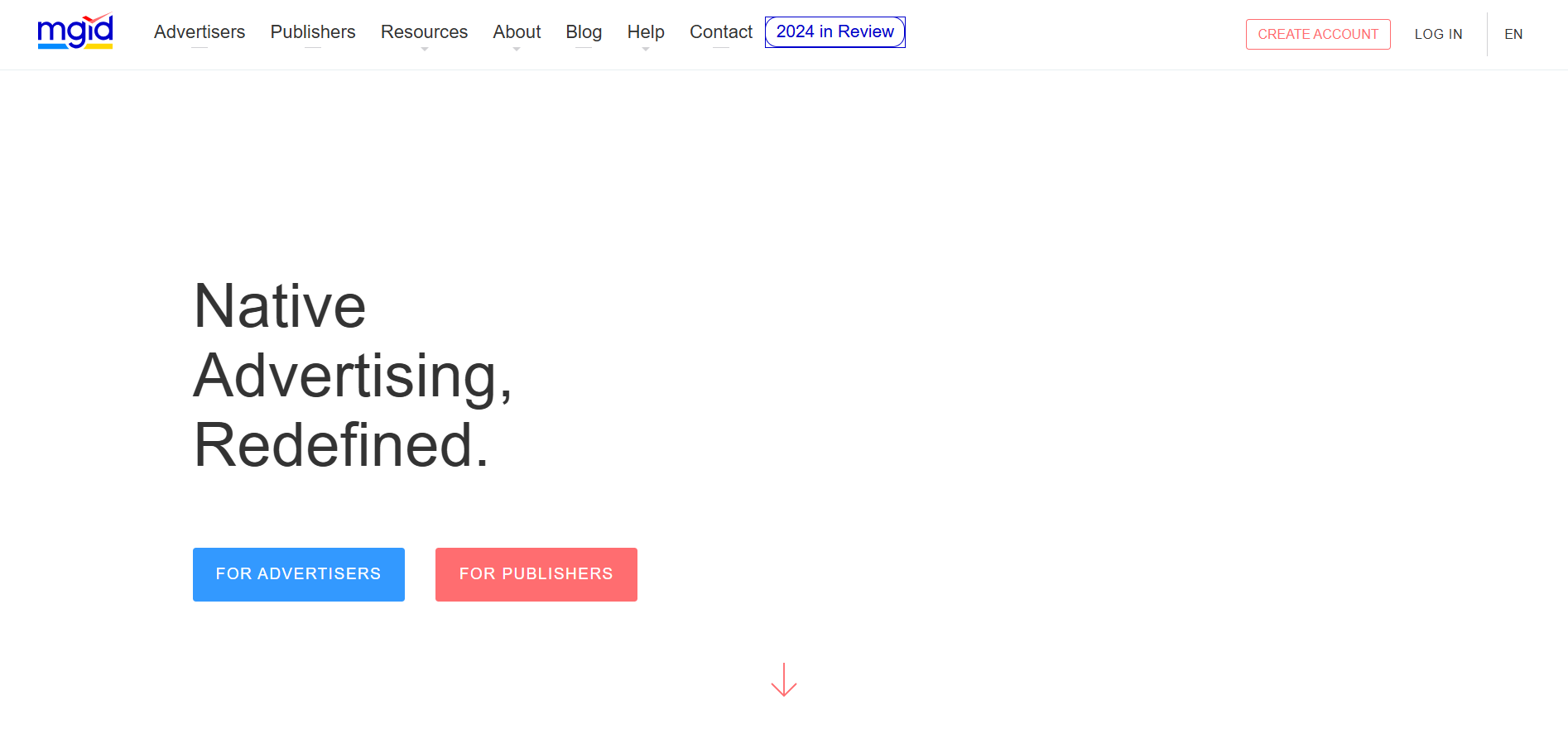
MGID has earned a strong reputation as a pioneer in native advertising, excelling in seamless content integration and powerful audience engagement strategies. It targets the intersection of brand awareness and conversions, employing strict quality standards and cutting-edge algorithms. Its focus on non-intrusive formats appeals to brands prioritizing user experience above all.
Key Features of MGID
- Ad Formats: MGID specializes in native ads, including in-feed units, sponsored content widgets, and native video. These formats blend seamlessly with publisher content, leading to higher engagement rates.
- Targeting Options: The platform provides contextual targeting, geographic targeting, and device targeting. It also offers behavioral targeting, which uses user data to serve more relevant ads. Retargeting capabilities are available to re-engage users who have previously interacted with the advertiser’s brand.
- Optimization: MGID’s platform allows advertisers to A/B test ad headlines and images. This helps optimize click-through rates. The network’s algorithms analyze campaign performance to provide optimization recommendations.
- Content Guidelines: MGID maintains strict content quality guidelines for its advertisers and publishers. This ensures a positive user experience and protects brand safety.
Pros
- Premium Native Traffic: Focuses on high-quality, brand-safe placements across trusted publishers.
- Content-Focused Advertising: Perfect for advertisers using storytelling or long-form content to drive conversions.
- Advanced Targeting Options: Supports behavioral, contextual, and geo-targeting for refined audience reach.
- Comprehensive Analytics: In-depth reporting tools help measure engagement and optimize creatives effectively.
- Dedicated Account Management: Personalized support and optimization advice enhance campaign results.
Cons
- Limited Ad Format Variety: Primarily focused on native ads, with fewer push or pop options compared to competitors.
- Higher Entry Cost for Premium Campaigns: Quality traffic often comes with a higher CPC or CPM rate.
- Creative Approval Delays: Strict content and image policies can slow down campaign launches.
- Learning Curve for Native Strategy: New advertisers may need time to master native ad storytelling and design.
- Variable Performance by Vertical: Some niches perform better than others depending on content quality and audience intent.
RichAds
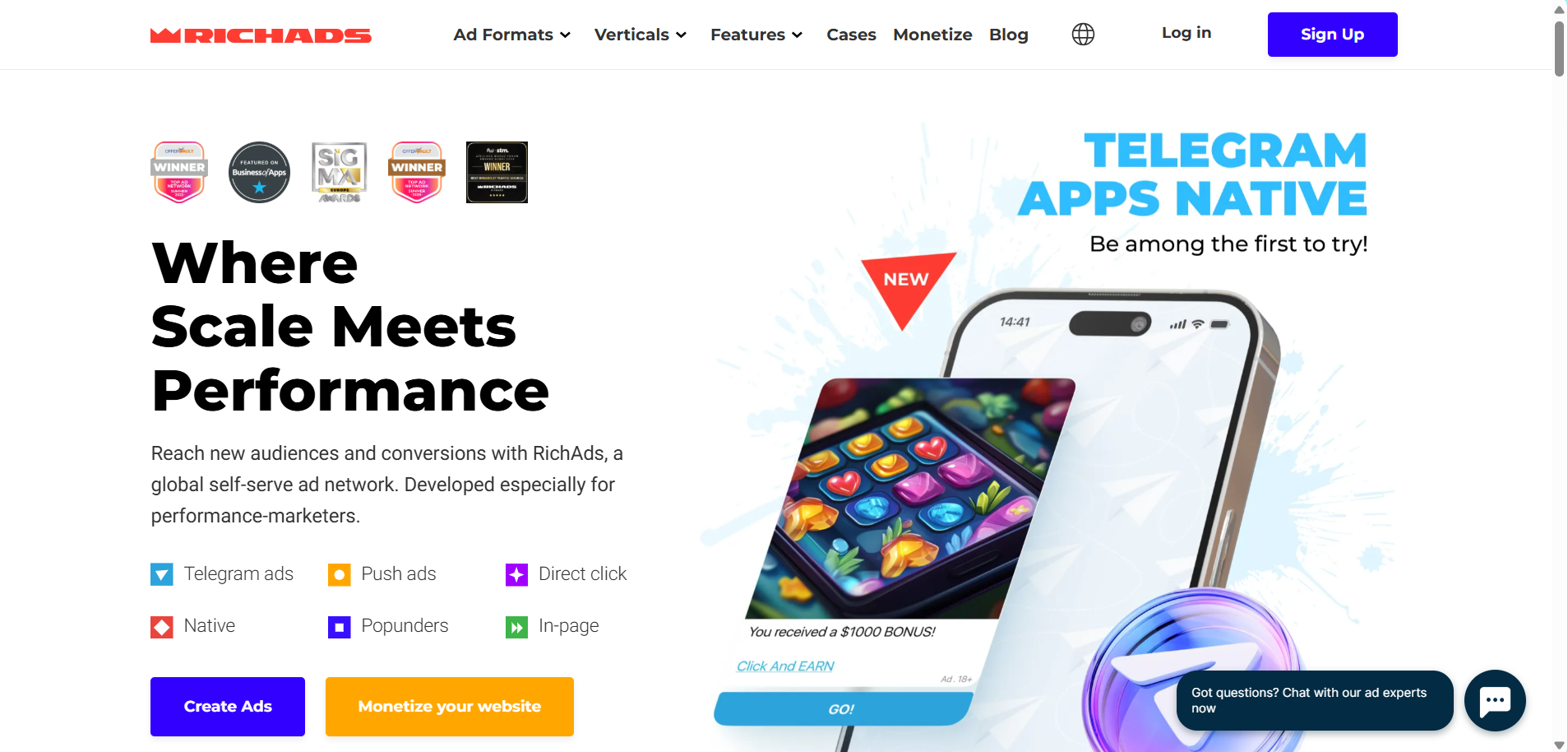
RichAds is tailored for performance-focused marketers, particularly those seeking volume and flexibility in push, pop, and direct click traffic. The platform brings together a suite of automated tools, robust optimisation controls, and personal support to help advertisers quickly scale and refine results on a global basis..
Key Features of RichAds
- Ad Formats: RichAds offers Push Ads, In-Page Push, Pop Ads, and Direct Click traffic. Direct Click sends users directly to the advertiser’s landing page without an ad creative.
- Traffic Sources: The network provides traffic from over 220 countries. Advertisers can choose from four levels of traffic quality: Premium, Standard, Remnant, and New. This allows for precise budget allocation based on performance.
- Optimisation Features: RichAds offers advanced optimisation tools. Target CPA automates bidding to meet conversion cost goals. Automated Rules allow advertisers to create custom if/then logic to manage their campaigns. The platform also has a Micro Bidding feature for adjusting bids on specific parameters.
- Support: Each advertiser is assigned a dedicated account manager. These managers provide expert advice on campaign setup, optimisation, and strategy.
Pros
- Traffic Quality Segmentation: Advertisers can filter and target traffic based on performance tiers to improve results.
- Advanced Optimisation Tools: Features like Micro Bidding, Automated Rules, and Whitelists streamline campaign management.
- Wide Range of Ad Formats: Supports Push, Pop, Calendar, and Direct Click ads for diverse campaign goals.
- Dedicated Account Managers: Personal support and strategic guidance available for both new and experienced advertisers.
- Fast Campaign Launch: Intuitive dashboard enables quick setup and real-time adjustments for faster scaling.
Cons
- Higher Learning Curve: Advanced features may be overwhelming for beginners.
- Moderate Minimum Deposit: A $100 deposit may still be high for very small advertisers or testing budgets.
- Limited Native or Display Ads: The focus remains on push and pop formats, with fewer display options.
- Inconsistent Traffic Quality Across Geos: Performance can vary significantly depending on country and vertical.
- Requires Ongoing Optimisation: To achieve top ROI, campaigns often need frequent monitoring and adjustments.
MyBid
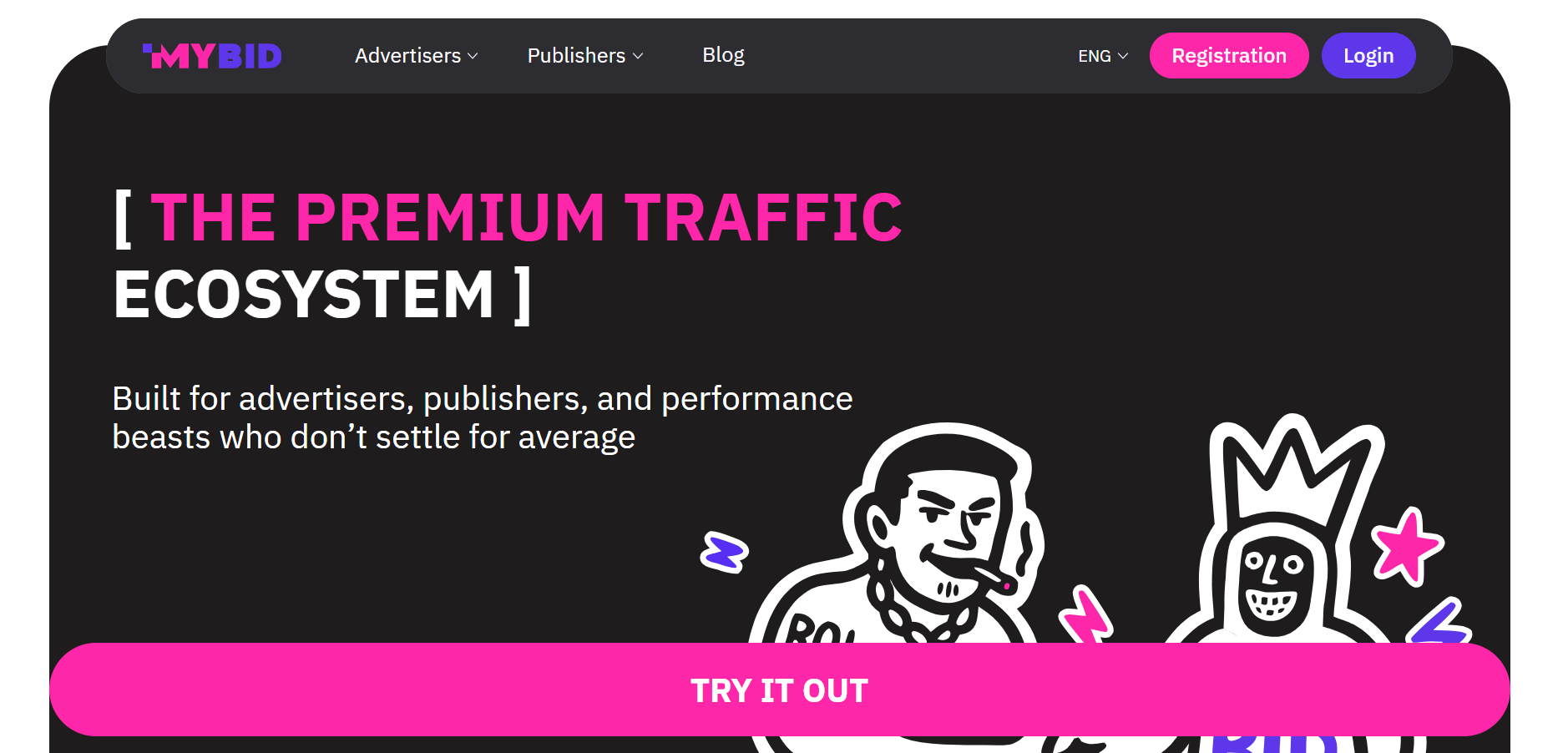
Arapidly rising star, MyBid leverages the latest in AI-driven optimization to put sophisticated campaign management in the hands of every advertiser. With a focus on intuitive design and actionable insights, it brings the power of smart targeting, real-time adjustments, and automated bidding to new and experienced users alike.
Key Features of MyBid
- Ad Formats: MyBid offers In-Page Push, Push Notifications, Pop traffic, and Banner ads. Its AI-based ad formats are designed to maximise engagement and conversion rates.
- Targeting and Bidding: The platform features AI-powered targeting and bidding. This technology analyses user behaviour to predict performance and adjust bids in real-time. It simplifies the optimisation process for advertisers.
- Real-Time Statistics: MyBid provides a detailed and intuitive dashboard with real-time statistics. Advertisers can monitor their campaigns closely and make quick adjustments as needed.
- Global Reach: The network boasts traffic from over 200 GEOs, providing a wide reach for international campaigns. It works with a diverse range of verticals, including Finance, Dating, and E-commerce.
Pros
- AI-Driven Optimisation: Automated algorithms adjust bids and placements for improved ROI and reduced manual work.
- User-Friendly Dashboard: Simple and modern interface suitable for both beginners and experienced advertisers.
- Real-Time Analytics: Provides instant insights for faster decision-making and campaign adjustments.
- Flexible Budget Control: Allows easy scaling and bid adjustments across multiple traffic sources.
- Fast Campaign Setup: Quick approval process and streamlined setup reduce downtime before launch.
Cons
- Limited Ad Format Variety: Focuses primarily on performance formats, with fewer display or native options.
- Less Suitable for Manual Control: Heavy reliance on AI may not appeal to advertisers who prefer full manual optimisation.
- Newer Network: Smaller brand recognition compared to long-established ad networks.
- Variable Traffic Volume by Geo: Availability and performance can fluctuate across different regions.
- Limited Third-Party Integrations: Fewer external tool connections compared to larger ad platforms.
ExoClick
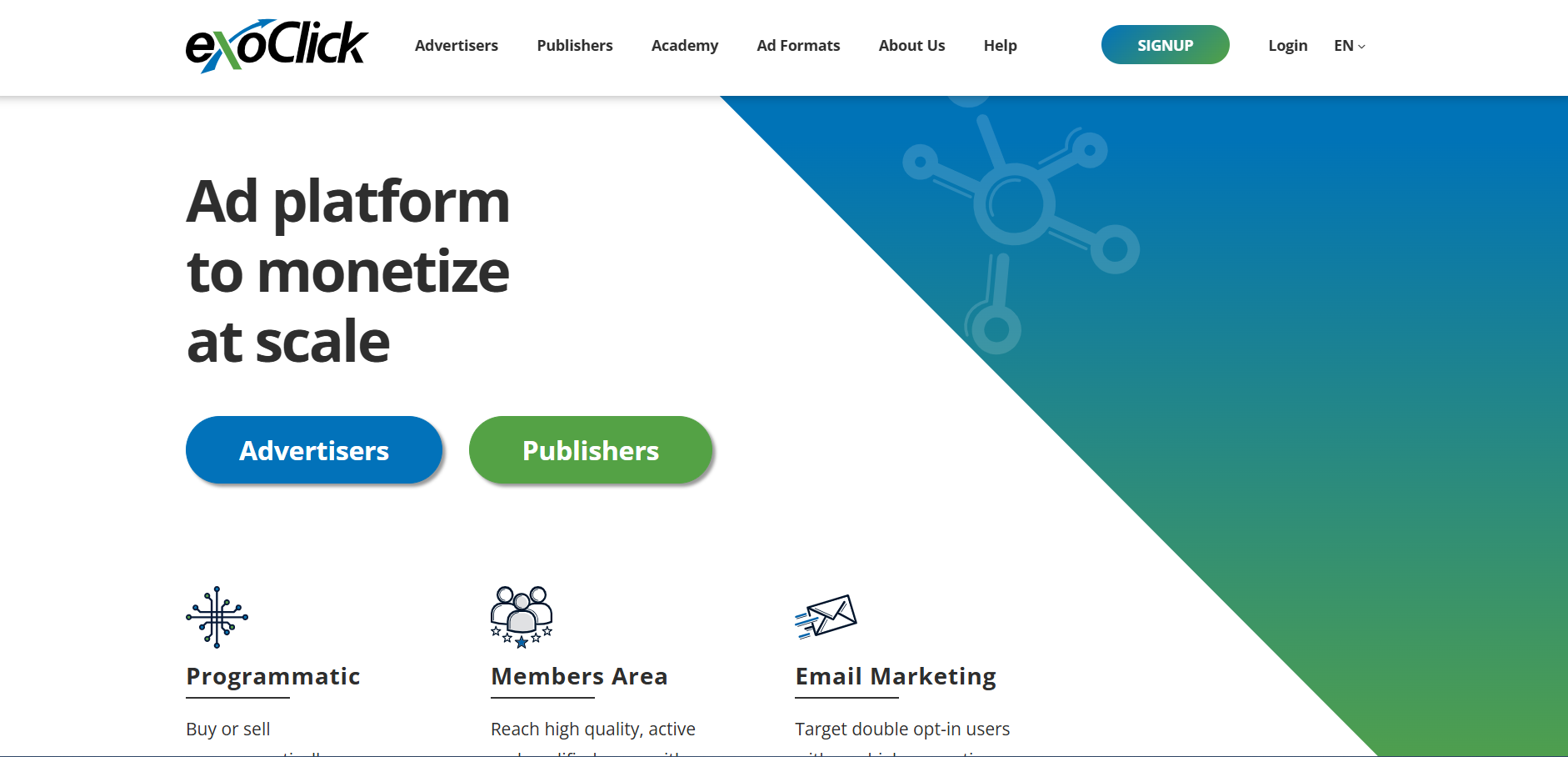
Founded in 2006,ExoClick offers a massive ecosystem for advertisers looking to scale up on an international level. The platform boasts over 10 billion daily geo-targeted impressions and an extraordinary choice of over 20 ad formats, empowering marketers to mix and match strategies for the best results.
Key Features of ExoClick
- Ad Formats: ExoClick offers more than 20 different ad formats. These include Push Notifications, In-Stream Video, Banners, Native Ads, pop-ups, and Interstitials. This extensive variety provides direct advertisers with numerous ways to engage their target audiences.
- Targeting Options: The platform features deep targeting capabilities. Advertisers can target users by GEO, language, browser, operating system, device, and mobile carrier. It also provides advanced options like keyword targeting and IP range targeting for precise audience segmentation.
- Optimization and Bidding: ExoClick provides an automated platform with several optimization tools. The Bidder is an algorithmic tool that automates the bidding process to optimize for performance. It also allows for A/B testing of landing pages to improve conversion rates.
- Real-Time Statistics: Advertisers gain access to a robust reporting system. The dashboard shows real-time statistics for impressions, clicks, conversions, and costs. This data empowers advertisers to make immediate, informed decisions about their campaigns.
Pros
- Extensive Global Reach: Access to premium traffic from over 240 countries and multiple device types.
- Advanced Targeting Options: Supports geo, device, browser, carrier, and keyword targeting for precise audience control.
- Comprehensive Ad Formats: Includes display, video, native, popunder, and in-stream ads for flexible campaign strategies.
- Powerful Optimization Tools: Automated bidding and rule-based optimization enhance performance and reduce manual effort.
- Real-Time Reporting: Detailed analytics allow quick insights and informed campaign adjustments.
Cons
- High Competition for Premium Traffic: Popular placements can become expensive due to strong advertiser demand.
- Steeper Learning Curve: The wide range of tools and settings can be complex for new users.
- Strict Content Guidelines: Adult and sensitive verticals must adhere to detailed compliance rules.
- Variable Traffic Quality: Requires active filtering to maintain consistent conversion rates across sources.
- Minimum Deposit Threshold: The initial deposit may be higher than some smaller networks, limiting entry for new advertisers.
Evadav
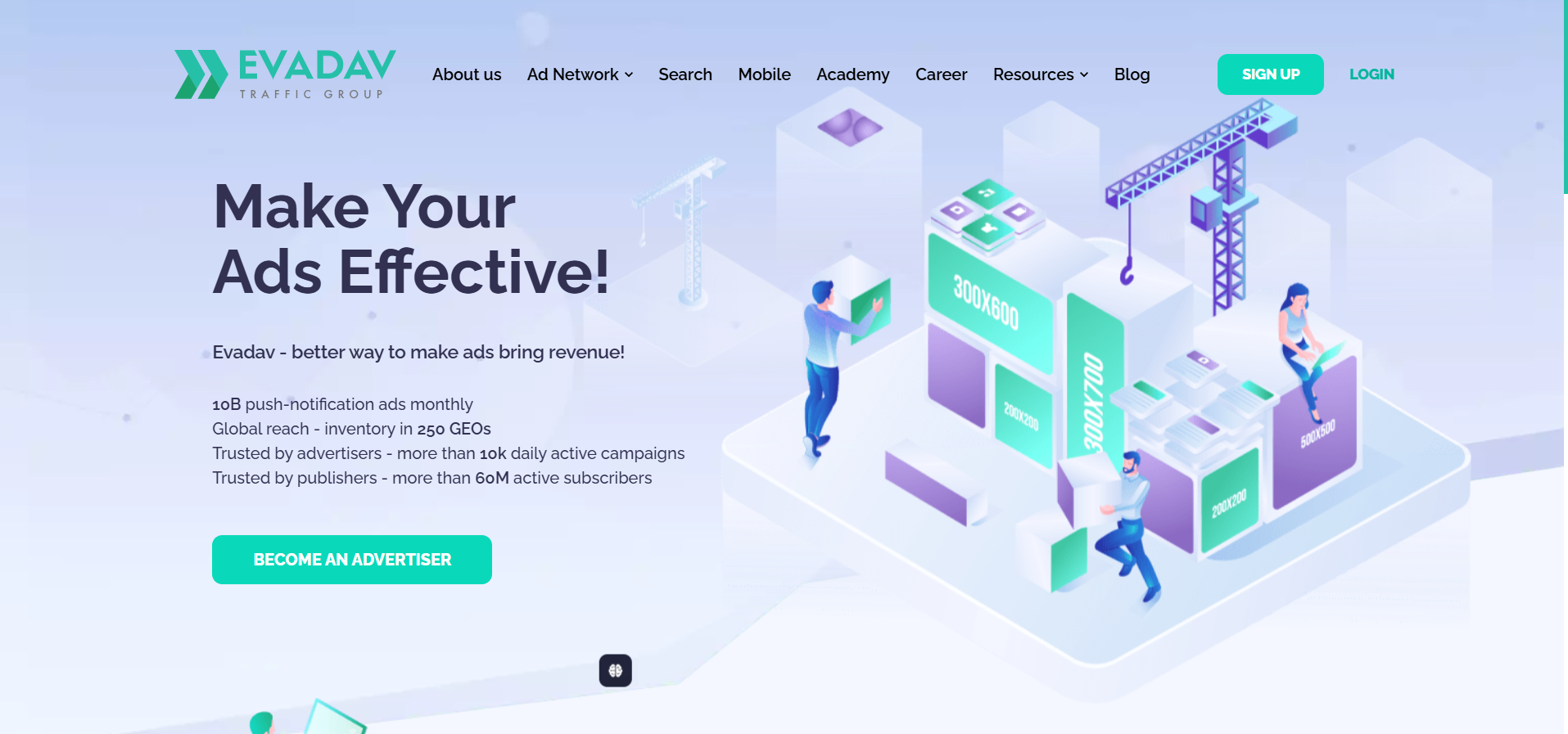
Evadav’s specialty lies in push notifications and native advertising, with an emphasis on quality and fraud-free inventory from verified publishers. Smart automation and straightforward campaign management help advertisers maximize engagement and ROI, regardless of experience level.
Key Features of Evadav
- Ad Formats: Evadav specializes in high-engagement ad formats. Its main offerings are Classic Push, In-Page Push, Native Ads, and Pop-under traffic. These formats are effective for direct response campaigns aiming for high click-through and conversion rates.
- Traffic Quality: The network vets all publisher websites to ensure traffic quality. It uses advanced algorithms to filter out fraudulent and bot traffic, ensuring that advertisers’ budgets are spent on real user engagement.
- Targeting and Optimization: Evadav offers comprehensive targeting options. These include GEO, OS, browser, language, and subscription period for push traffic. The platform also has an auto-optimization feature that helps advertisers achieve their desired CPA by adjusting bids and traffic sources automatically.
- User-Friendly Platform: The self-serve platform is intuitive and easy to navigate. This makes it accessible for advertisers of all experience levels. It provides detailed, real-time reporting to help users track campaign performance effectively.
Pros
- High-Quality Traffic: Verified publishers and strict anti-fraud measures ensure cleaner, more reliable traffic.
- Diverse Ad Formats: Offers Push, Native, Popunder, and In-Page Push ads for flexible campaign strategies.
- Automation and Optimization: Smart algorithms help maximize ROI with minimal manual intervention.
- User-Friendly Dashboard: Intuitive interface suitable for beginners and experienced media buyers alike.
- Flexible Payment Options: Supports multiple payment methods and a relatively low minimum deposit.
Cons
- Limited Advanced Targeting: Fewer granular targeting options compared to larger ad networks.
- Moderate Traffic Volume: Smaller inventory than major competitors, especially in some geos.
- Variable Performance by Vertical: Certain niches perform better depending on traffic type and audience.
- Creative Approval Times: The Manual ad review process can occasionally delay campaign launches.
- Requires Continuous Testing: Campaign performance often depends on ongoing creative and bid optimization.
TrafficStars
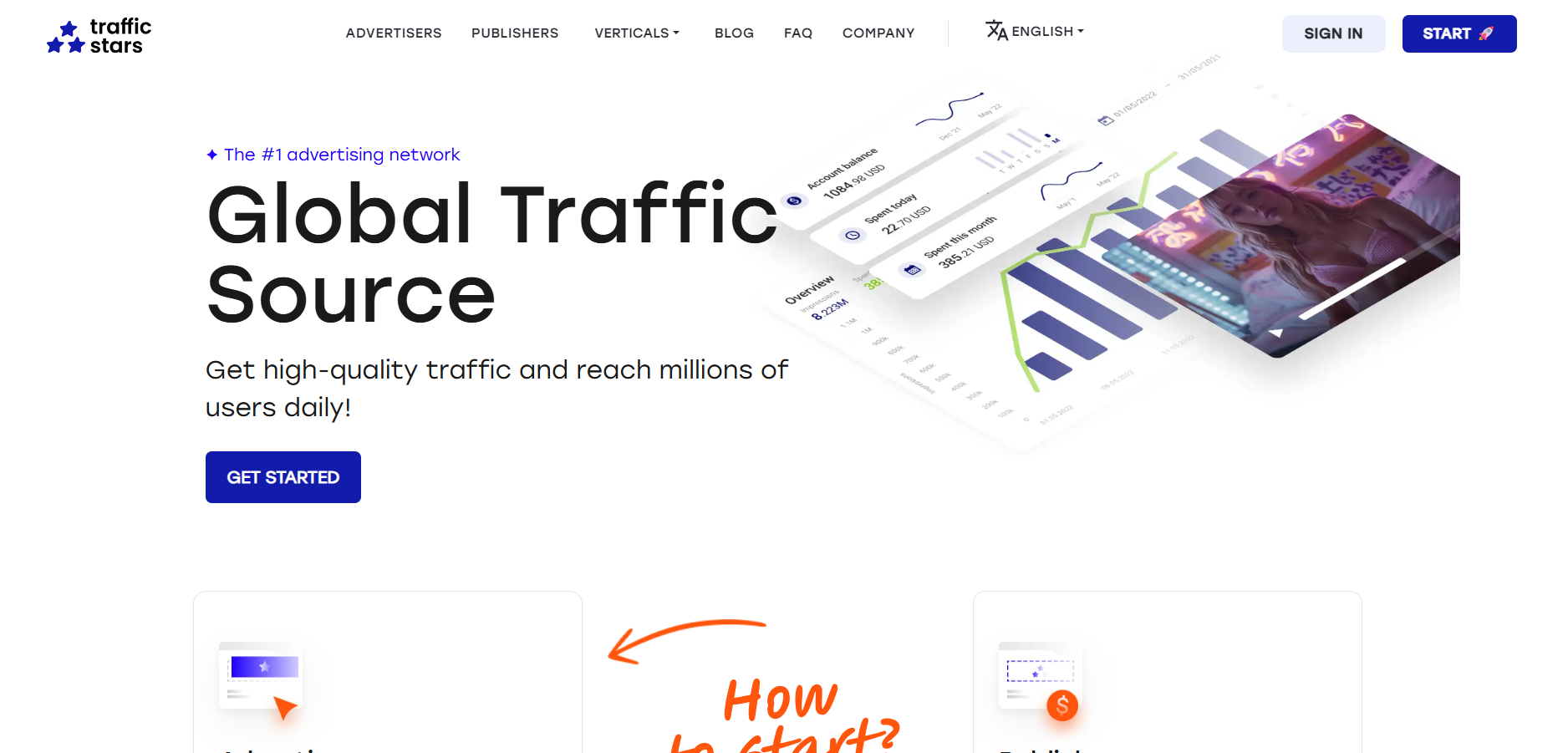
TrafficStars is recognized for its strategic control, exclusive publisher inventory, and RTB capabilities. Designed for advanced and performance-focused advertisers, the network enables sophisticated targeting, comprehensive analytics, and maximum flexibility for campaign management.
Key Features of TrafficStars
- Ad Formats: The network supports a wide range of ad formats, including Banners, Native Ads, pop-ups, Video Pre-Roll, and Interstitials. This diversity enables advertisers to run multiple types of campaigns, catering to various marketing objectives.
- Targeting Options: TrafficStars offers granular targeting options. Advertisers can target by GEO, category, keyword, browser, device, OS, and language. It also features Run-of-Network (RON) and Prime targeting, which segments traffic based on performance history.
- Real-Time Bidding (RTB): As an ad exchange, TrafficStars allows advertisers to bid on individual ad impressions in real-time. This RTB system enables highly efficient media buying and precise user targeting, ensuring ads are served to the most relevant audience at the optimal price.
- Advanced Tools: The platform includes powerful tools for experienced media buyers. Features like automated rules and advanced analytics give advertisers deep control over campaign optimization. It also offers dedicated account managers for personalized support and strategic guidance.
Pros
- Advanced Bidding Capabilities: Offers full control over bids, frequency, and targeting parameters for precise optimization.
- Exclusive Publisher Access: Connects advertisers with premium and direct publishers for better traffic quality.
- Comprehensive Ad Formats: Supports display, native, video, and pop ads to suit various campaign objectives.
- Real-Time Bidding (RTB): Dynamic bidding ensures competitive pricing and access to premium traffic in real time.
- Detailed Analytics: In-depth reporting helps advertisers monitor performance and refine strategies quickly.
Cons
- Higher Competition: Premium inventory can be costly due to competitive bidding.
- Steeper Learning Curve: Advanced settings may overwhelm beginners without prior media buying experience.
- Limited Entry-Level Tools: The platform is geared more toward experienced advertisers and agencies.
- Performance Varies by Niche: Some verticals perform significantly better depending on audience and traffic source.
- Minimum Deposit Requirement: The initial deposit may be higher compared to smaller ad networks.
Clickadu
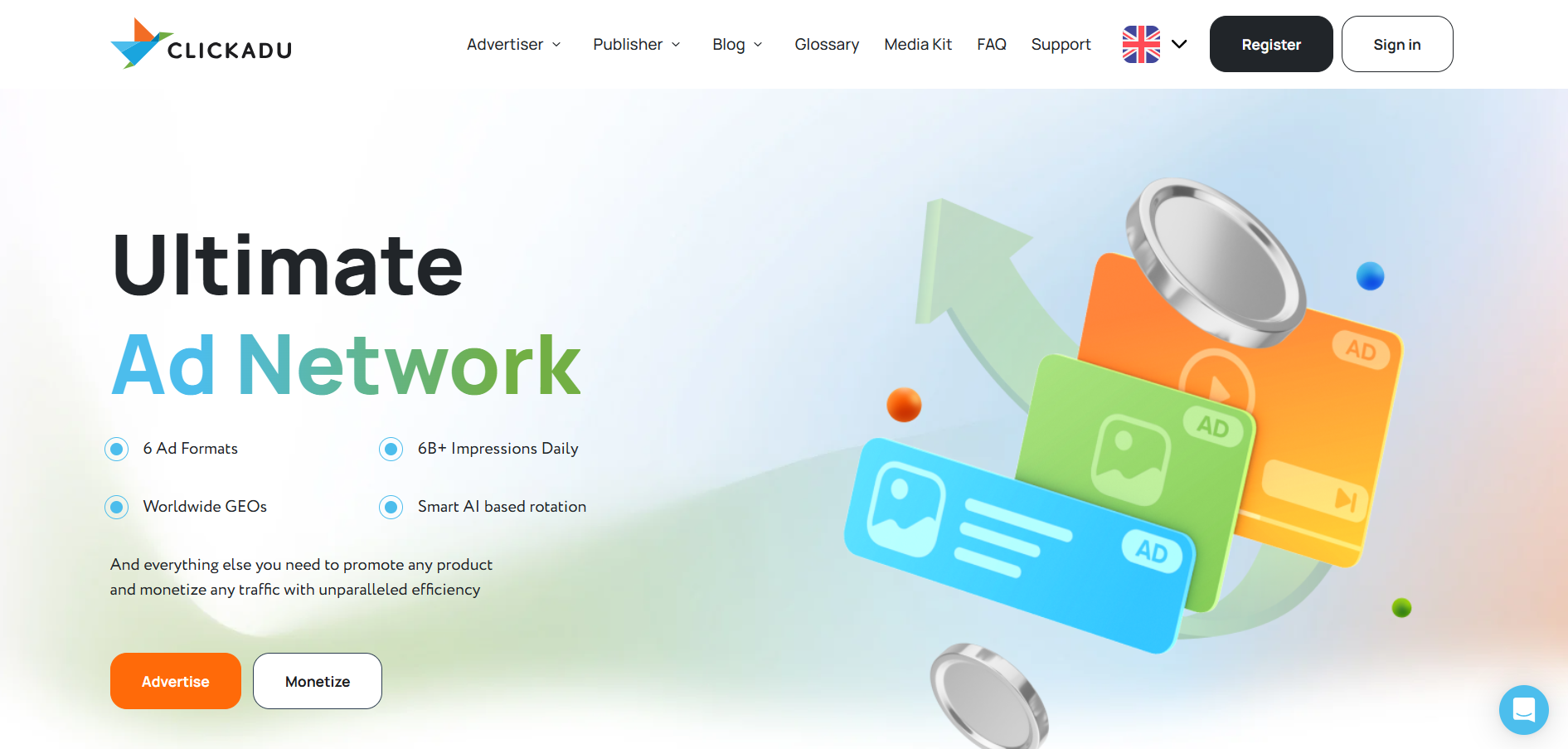
Founded in 2014,Clickadu has grown into a global advertising network recognized for itshigh-converting ad formats andmassive traffic volume. The platform specializes inperformance marketing and provides advertisers with the tools to reach audiences across diverse niches. With smart optimization, flexible targeting, and 240+ GEO coverage, Clickadu is a go-to choice for marketers seeking scale, control, and measurable results.
Key Features of Clickadu
- Ad Formats: Clickadu supports multiple high-performing formats, including Popunders, Push Notifications, In-Page Push, Video Ads, and Native Ads. These options allow advertisers to create campaigns that fit both direct response and brand awareness goals.
- Targeting and Optimization: The platform provides advanced targeting by GEO, device, browser, and connection type. Clickadu’s SmartCPA tool automatically adjusts bids to meet advertisers’ performance targets, simplifying optimization.
- Traffic Sources: With traffic from over 240 countries, Clickadu provides access to both premium and remnant inventory, enabling advertisers to balance reach and budget efficiency.
- Real-Time Analytics: Its detailed reporting dashboard displays key performance metrics, such as CTR, CPA, and conversions, in real-time, allowing for quick and effective campaign adjustments.
- Support and Accessibility: Clickadu offers multilingual support and a flexible self-serve platform suitable for both beginners and professional media buyers.
Pros
- Wide Range of Ad Formats: Offers push, popunder, native, and video ads for diverse campaign objectives.
- Global Traffic Reach: Delivers impressions from over 240 countries with high engagement rates.
- Smart Optimization Tools: Automated CPA and bid adjustment features enhance efficiency.
- Quick Campaign Setup: Simple onboarding and fast approval process speed up campaign launches.
- Flexible Payment Methods: Supports crypto, PayPal, credit cards, and wire transfers with low minimum deposits.
Cons
- Popunder Dominance:Heavy focus on pop traffic may not suit all advertisers or verticals.
- Variable Traffic Quality: Some low-tier GEOs may require manual filtering.
- Dashboard Learning Curve: The Interface can feel complex for first-time users.
- Competition in Popular Verticals: Certain categories, like finance or dating, are highly competitive.
- Limited Manual Targeting: Some automation features restrict full manual control.
HilltopAds
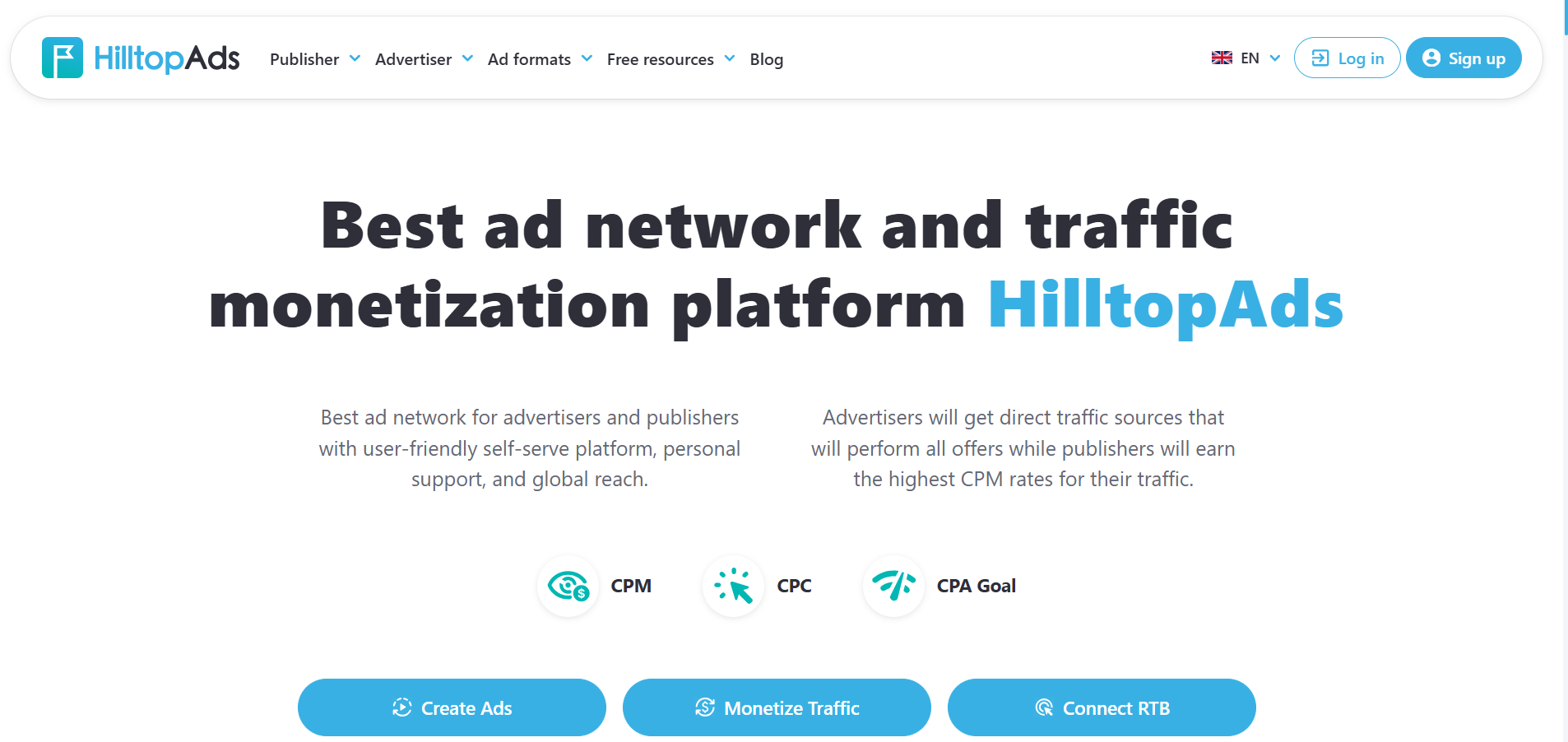
HilltopAds has earned its place among trusted ad networks by offeringclean, high-quality traffic andadvanced campaign control. With a focus on transparency, fraud prevention, and affordability, it caters to advertisers seeking stable performance and global reach. HilltopAds combinesprecision targeting, real-time reporting, and24/7 support, making it an ideal platform for both newcomers and experienced media buyers.
Key Features of HilltopAds
- Ad Formats: The network supports Popunder, Push Notifications, Native Ads, and Direct Link traffic. These formats provide flexibility for various campaign goals, from lead generation to branding.
- Targeting Options: HilltopAds offers detailed targeting, including GEO, device, browser, and connection type. Advanced filters ensure that ads reach relevant and active audiences.
- Traffic Quality: With built-in anti-fraud technology, HilltopAds filters non-human and low-quality clicks, maintaining advertiser ROI.
- Reporting and Optimization: The intuitive dashboard provides real-time analytics and supports quick bid adjustments. Automated optimization features help maintain consistent performance.
- Support and Usability: The platform offers 24/7 live chat support, account managers, and a simple campaign setup process for fast deployment.
Pros
- High-Quality Traffic: Strong anti-fraud systems ensure genuine user engagement.
- Multiple Ad Formats: Includes push, pop, and native ads suitable for different strategies.
- Affordable Entry Point: Low minimum deposit makes it accessible for small advertisers.
- Real-Time Analytics: Immediate performance data supports quick optimization.
- Dedicated Support: 24/7 multilingual assistance and account managers available.
Cons
- Smaller Global Footprint: Less traffic volume compared to major networks.
- Slower Approval Times: Campaign reviews may take longer during peak hours.
- Limited Premium GEO Options: Stronger in Tier 2 and Tier 3 markets than Tier 1.
- Fewer Integration Tools: Limited compatibility with third-party trackers.
- Requires Ongoing Testing: Performance consistency relies on continuous optimization.
How to Select the Right Ad Network
To select the right ad network, advertisers must evaluate several factors. This evaluation ensures the chosen platform aligns with their specific goals and resources.
Define Your Campaign Goals
First, define your campaign objectives. Are you seeking to generate leads, drive sales, or increase app installs? Different networks specialize in different types of campaigns. A network strong in CPI models is ideal for app install campaigns. A network with a robust CPA model is better for lead generation.
Analyze Your Target Audience
Focus on your audience’s main demographics, locations, and behaviors. Choose ad networks that can effectively reach these segments.
Then, evaluate the ad formats offered. Ensure the network supports formats that are effective for your vertical. Native ads perform well for finance and health products. Pop-ups are effective for sweepstakes and software downloads. Check for any restrictions on certain verticals; networks do not permit gambling or adult content.
Consider Minimum Deposit and Payment Models
Finally, consider the financial requirements. Check the minimum deposit amount to ensure it fits your budget. Evaluate the available payment models (CPC, CPM, CPA). A network offering a CPA model is often preferred by direct advertisers, as it ties costs directly to results.
Conclusion
The landscape of Best Direct Advertiser Networksin 2026 offers direct advertisers a powerful set of tools for reaching their target audiences and achieving performance goals. Ad networks like PropellerAds, Adsterra, MGID, RichAds, MyBid, ExoClick, Evadav, and TrafficStars each provide unique strengths, from massive traffic volumes and innovative ad formats to AI-powered optimization and dedicated support.
To succeed, advertisers must perform due diligence. The process involves clearly defining campaign goals, understanding the target audience, and carefully evaluating the features, traffic quality, and pricing models of potential network partners. By making an informed choice, direct advertisers can leverage these platforms to drive significant return on investment and scale theirmarketing efforts globally. The right ad network is not just a traffic source; it is a strategic partner in growth.
Frequently Asked Questions (FAQS)
What is an ad network, and how does it work?
An ad network connects advertisers with publishers, aggregating ad space from various sites and matching it with advertisers’ campaigns, helping streamline the process of running ads across multiple platforms.
Which ad formats are most effective for direct advertisers?
The most effective formats often include push notifications, native ads, pop-unders, banners, and video ads. The best format depends on the campaign goals and target audience.
How can I ensure my ads reach the right audience?
Ad networks offer advanced targeting options, such as GEO, device, behavioral, and demographic targeting. Using these settings increases relevance and maximizes ROI.
What is the minimum deposit required to start with a top ad network?
Most leading ad networks have minimum deposits ranging from $50 to $100, making them accessible for a range of budgets.
How do ad networks protect against fraud?
Top ad networks use built-in fraud detection systems and third-party verification tools to filter out bot traffic and non-genuine clicks, ensuring your ad spend is used effectively.
Can I track the performance of my campaigns in real-time?
Yes, most premium ad networks offer real-time analytics and reporting dashboards, allowing advertisers to monitor impressions, clicks, conversions, and more instantly.
Are certain ad networks better for specific industries?
Yes, some networks specialize in certain verticals (like finance, dating, or gaming), and offer ad formats and audiences that cater to those industries for optimal results.
What payment models do ad networks offer?
Common payment models include CPC (cost per click), CPM (cost per mille), CPA (cost per action), and CPL (cost per lead), allowing flexibility to suit various campaign strategies.
